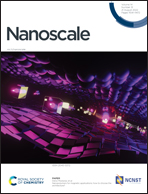Robust pure spin current induced by the photogalvanic effect in half-silicane with spatial inversion symmetry
Abstract
The spin-dependent photogalvanic (PG) effect in low-dimensional spin semiconductors has attracted great interest recently. Here, we have studied the spin semiconducting feature and spin-dependent photocurrent in a two-dimensional (2D) silicene-based device with spatial inversion symmetrical half-hydrogenation, in which half of the silicene is hydrogenated on the upper surface and half is hydrogenated on the lower surface. Because of the unique spin semiconductor properties and symmetry of the system, pure spin current can be robustly produced in both the zigzag and armchair directions for linearly and elliptically polarized light. The behavior of the spin-dependent photoresponse in the spin PG effect is highly anisotropic and can be tuned by the polarization/phase angles or photon energy (Eph). Moreover, the produced pure spin current in such a half-silicane device with spatial inversion symmetry via the PG effect is several orders of magnitude larger than that obtained in metal/semiconductor/metal systems. These findings suggest a promising approach for generating pure spin current by the PG effect and provide a new possibility for the application of 2D half-silicane in spintronics.



 Please wait while we load your content...
Please wait while we load your content...